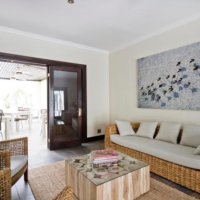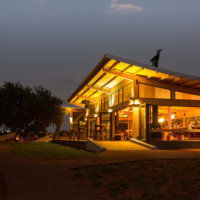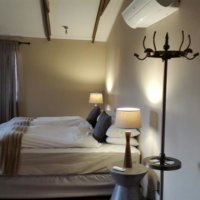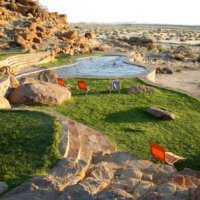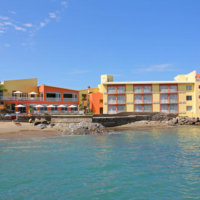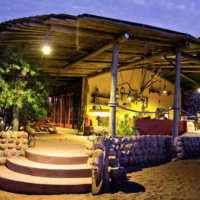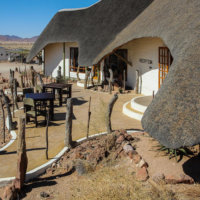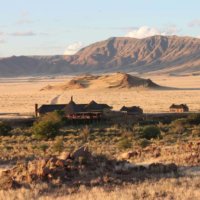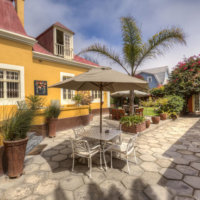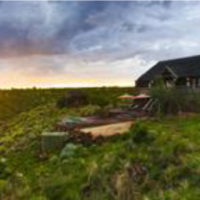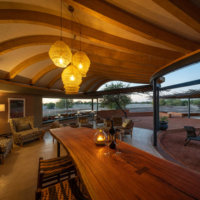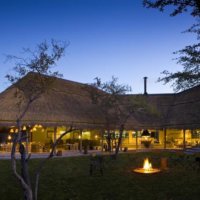18 days / 17 nights
From N$ 46 645.00 per person sharing
SELF-DRIVE – STANDARD VERSION: Per person sharing: N$46,645.00
Single supplement: N$9,425.00
Minimum 2 guests
SELF-DRIVE – LUXURY VERSION: Per person sharing: N$90,875.00
Single supplement: N$17,450.00
Minimum 2 guests
No set departures. Rate for minimum 2 participants
This self-drive safari takes you to some of Namibia’s most famous highlights. Admire the deep gorges of the Fish River Canyon, climb the world’s highest dunes at Sossusvlei and discover that the desert “lives”. Allow yourself to be enchanted by the magic of Lüderitz and Swakopmund, two charming towns on the coast of the Atlantic Ocean. Enjoy the drive to Grootberg Lodge and cross the world famous Etosha National Park from west to east before returning to Windhoek via the popular Okonjima Lodge.
Arrival at Hosea Kutako (Windhoek International) airport, where you will receive your rental vehicle.
Once you have sorted out all the formalities for your vehicle, drive to Windhoek, the capital city of Namibia. After check-in at the accommodation establishment, you can explore the city of Windhoek.
Windhoek is a city of many contrasts. Modern skyscrapers blend with historic buildings dating from the turn of the century. Several buildings from the German colonial era have been preserved and restored to fulfil useful functions in the community today.
Standard Category: Overnight stay at Galton House (or similar) (on Breakfast basis)
Luxury Category: Overnight stay at Olive Grove Guesthouse (or similar) (on Breakfast basis)
After breakfast departure from Windhoek and drive via Rehoboth into the red dunes of the Kalahari Desert.
Late afternoon you can optionally participate in a guided game drive to learn about the flora and fauna of the Kalahari Desert.
Standard Category: Overnight stay at Kalahari Anib Lodge (or similar) (on Breakfast basis)
Luxury Category: Overnight stay at Bagatelle Kalahari Game Ranch (or similar) (on Dinner & Breakfast basis)
A full day’s journey takes you south through the desert-dominated landscapes to a picturesque Quiver Tree Forest.
This prehistoric tree reaches skyward with graphically forked branches, their trunks peel and form intricate patterns as the tree matures, and these are rewarding subjects to photograph.
Giant’s Playground is an impressive jumble of massive boulders; a virtual maze where time can be spent wandering through the extensive rocky labyrinth. You proceed to Keetmanshoop and thereafter continue via the Naute Dam, to the Fish River Canyon, which is the second largest in the world.
Standard Category: Overnight stay at Canyon Roadhouse (or similar)(on Breakfast basis)
Luxury Category: Overnight stay at Canyon Lodge (or similar) (on Breakfast basis)
Today you can view the spectacular northern fringes of the Fish River Canyon from various vantage points. Here the impressive surrounding rock formation provides many interesting hours for enthusiastic nature lovers.
Overnight (for both categories) on Breakfast basis
The next leg of the journey takes you via the small historic village of Aus and through the vast barren expanse of the Prohibited Diamond Area, to Lüderitz.
Lüderitz is renowned for its old-world charm and distinctly German colonial architecture. Set around the bay, with their original gables, winding stairwells, verandas, turrets and bay- and bow windows still intact, these buildings have a unique character.
Standard Category: Overnight stay at Kairos Cottage Guesthouse (or similar) (on Breakfast basis)
Luxury Category: Overnight stay at The Nest Hotel (or similar) (on Breakfast basis)
The journey leads once more through the Diamond Prohibited Area via Aus and Helmeringhausen to the Tiras Mountains.
En route, visit Kolmanskop, a ghost town that was abandoned over 40 years ago and now gives a fascinating insight into the area’s great diamond boom.
A few of the buildings have been restored, but many are left exactly as they were, and now the surrounding dunes are gradually burying them.
Standard Category: Overnight stay at Namtib Guestfarm (or similar) (on Breakfast basis)
Luxury Category: Overnight stay at Koiimasis “Fest im Fels” Lodge (or similar) (on Breakfast basis)
Today you travel through some of Namibia’s most spectacular sceneries. Vast expanses of yellow savannah are dotted with bushes and solitary camelthorn trees. Distant mountain ranges take on different nuances of purple and blue as the day progresses.
En route you visit the Duwisib Castle, which was built by Baron von Wolff for his American wife Jayta in 1909. The furnishings and paintings were imported from Germany.
Your destination today are the dunes of Sossusvlei.
Standard Category: Overnight stay at Desert Homestead Lodge (or similar) (on Dinner & Breakfast basis)
Luxury Category: Overnight stay at Hoodia Desert Camp (or similar) (on Dinner & Breakfast basis)
Today we recommend an early morning rise for a visit to the Sossusvlei dunes. The park gates open at dawn and the golden light just after sunrise is perfect for photographs.
Sossusvlei is possibly Namibia’s most spectacular and best-known attraction. Characterised by the large red dunes that surround it, Sossusvlei is a large, white, salt and clay pan and is a great destination all year round. The dunes in this area are some of the highest in the world and provide photographic enthusiasts with wonderful images in the beautiful morning and evening light. Sossusvlei literally translates to “dead-end marsh”, as it is the place where the dunes come together preventing the Tsauchab River to flow any further, some 60km east of the Atlantic Ocean. However, due to the dry conditions in the Namib Desert the River seldom flows this far and the pan remains bone-dry most years.
Close to Sossusvlei, Deadvlei is a clay pan characterized by dark, dead camel thorn trees contrasted against the white pan floor. The pan was formed when the Tsauchab River flooded and the abundance of water allowed camel thorn trees to grow. However, the climate changed and the sand dunes encroached on the pan, blocking the river from reaching the area. The trees are estimated to be approximately 900 years old, however they have not decomposed due to the dry climate. Deadvlei is at least 1km walk from the parking lot so be sure to take drinking water with you.
After exploring all that Sossusvlei and Deadvlei have to offer, drive to the Sesriem Canyon, located approximately 4.5km from the entrance gate of the Namib-Naukluft National Park. The Tsauchab River has shaped the Canyon over millions of years and it is one of the few places in the area that holds water all year round. The early Afrikaans explorers in the region named the canyon after the fact that they had to use six (“ses”) leather straps (“riem”) tied together to create a rope long enough to lower buckets into the canyon below, in order to fetch water.
The road from Sesriem to the 2×4 car park (4 kilometres from the vlei) is tarred but is in poor condition and very pot-holed, so caution while driving is advised. As the road becomes a sandy track near the vlei itself, we advise all guests (no matter what vehicle you have booked) to use the NWR Shuttle Service (bookable and payable directly at the gate), which will take you from the 2×4 car park to the vlei parking.
Take along enough drinking water, sunscreen and a hat as it becomes extremely hot in this area.
Overnight (for both categories) on Dinner & Breakfast basis
The route today takes you north via the Kuiseb Canyon to Swakopmund. Highlights en route include a drive to the “Moon Landscape” and the ancient desert plant, “Welwitschia mirabilis”.
Where the desert dunes sweep down to the ocean on Namibia’s western flank, lies this charming seaside village. Swakopmund, deriving its name from the fact that it lies at the mouth of the Swakop River, is an oasis, neatly nestled between the wild Atlantic Ocean and the world’s most ancient sea of sand, the Namib Desert. With its old world charm, temperate climate and German background, Swakopmund is indeed the tourist mecca of Namibia, offering not only scenic beauty, but all the modern amenities and facilities to cater for tourists, both local and international.
Standard Category: Overnight stay at Organic Square Guesthouse (or similar) (on Breakfast basis)
Luxury Category: Overnight stay at Villa Margeritha (or similar) (on Breakfast basis)
Swakopmund has plenty of activities on offer. Ask our dedicated team for more information and they will be happy to assist you.
We can recommend a dolphin cruise (not included in the travel price):
You will be picked up at your accommodation and driven to the nearby town of Walvis Bay, from where your boat cruise with Laramon Tours departs. Please ensure that you have had breakfast and are ready to leave Swakopmund by approx. 08h00, as you are requested to be at the check-in at the Walvis Bay Waterfront by approx. 08h45.
The scenic drive from Swakopmund to Walvis Bay takes about 45 minutes. Don’t forget to take a hat, sunscreen and a warm jacket along. After 3 exciting hours the catamaran will dock and your guide will return you to the Guesthouse.
Your cruise today departs the Walvis Bay Yacht club at approx. 09h00 and takes you through the harbour, passing moored Russian trawlers en route and on to Pelican Point, where inquisitive seals will swim up to the boats looking for something to eat, all whilst pods of Heaviside and Bottlenose Dolphins swim alongside the boat. For bird lovers, apart from seeing flamingos, cormorants and pelicans, there are common sightings of the White Chinned Petrel, Wilson’s Storm Petrel, Black Oystercatcher and even the Jackass Penguin. With a bit of luck you might see a Sunfish (Mola Mola) and the Leatherback Turtles. In season, the larger mammals like the Southern Right Whale and the Humpback Whales may be spotted and occasionally the Killer Whales (Orcas).
To round the trip off you will be spoilt with fresh Walvis Bay oysters, snacks and cold sparkling wine on board as you make your way back to the docking station.
Overnight (for both categories) on Breakfast basis
Departure from Swakopmund along the Atlantic Coast towards the North.
Visit the lichen fields near Wlotzka’s Baken before continuing to Henties Bay, a small holiday resort. Onwards to the seal colony at Cape Cross.
After visiting the seals, the journey continues via Ugabmund to the southern Skeleton Coast Park to inspect a shipwreck. You leave the Skeleton Coast Park in the early afternoon via Springbokwasser and can experience the harsh transition from the Namib Desert to the Damaraland highlands with its impressive landscape and ragged valleys.
Standard Category: Overnight stay at Grootberg Lodge (or similar) (on Dinner & Breakfast basis)
Luxury Category: Overnight stay at Etendeka Mountain Camp (or similar) (on Full Board basis)
Whereas all activities are included at Etendeka Mountain Camp, there are a variety of activities to choose from at Grootberg Lodge, inter alia rhino tracking, an excursion to the Ovahimba and scenic drives into the immediate area.
Overnight: Grootberg on Dinner & Breakfast basis
Overnight: Etendeka on Full Board basis
Today’s drive takes you to the Etosha area. You can either take a detour to visit Twyfelfontein or you can take the route via Kamanjab and Outjo.
Twyfelfontein, which means “doubtful fountain” resembles a large, open-air art gallery. This treasure house of rock engravings left by stone-age artists is regarded as one of the richest collections of rock engravings in Africa.
Standard Category: Overnight stay at Okaukuejo Camp (or similar) (on Breakfast basis)
Luxury Category: Overnight stay at Anderssons Camp @ Ongava (or similar) (on Dinner & Breakfast basis)
Discover the mysteries of the African bush in Etosha National Park, whilst going on game drives in the Etosha Park. Relax at the waterhole and delight in the comings and goings of a variety of game at the floodlit waterhole.
Overnight: Okaukuejo on Breakfast basis
Overnight: Anderssons Camp @ Ongava on Dinner & Breakfast basis
You travel east through Etosha National Park and leave the Park through the von Lindequist Gate, the eastern gate of Etosha to Mushara Bush Camp.
En route, you stop at the numerous perennial springs found along the edge of the salt pan in search of lion, leopard, elephant and black rhino. Leave the Park via the eastern von Lindequist Gate and spend this night in a Lodge outside the Park.
Standard Category: Overnight stay at Mushara Bush Camp (or similar) (on Dinner & Breakfast basis)
Luxury Category: Overnight stay at Mushara Outpost (or similar) (on Dinner & Breakfast basis)
After breakfast you travel via Tsumeb to the “Hoba Meteorite”.
En route visit the Otjikoto Lake and the mine museum of Tsumeb. Continue to the Okonjima Lodge, home of the AfriCat Foundation, a non-profit organization dedicated to the conservation and protection of Namibian wild cats, in particular leopard and cheetah.
Enjoy the opportunity to admire and photograph these predators during today’s afternoon activity.
Standard Category: Overnight stay at Okonjima Plains Camp (or similar) (on Dinner & Breakfast basis)
Luxury Category: Overnight stay at Okonjima Bush Camp (or similar) (on Dinner & Breakfast basis)
Return journey via Okahandja to Windhoek. Okahandja is an important centre for woodcarvers from the north. They practice their ancient skills at the Woodcarvers Market next to the main road. This is a good place to pick a last souvenir.
Standard Category: Overnight stay at Galton House (or similar) (on Breakfast basis)
Luxury Category: Overnight stay at Olive Grove Guesthouse (or similar)(on Breakfast basis)
Depending on the departure time of your flight, you will have some time for last minute shopping before driving to the Windhoek International Airport in time to return your rental vehicle, take care of all formalities and check-in on your outbound flight.
Bid farewell to Namibia, we wish you a safe journey home.
- Accommodation and meals as specified
- Expenses of a personal nature, i.e. laundry, telephone expenses, gratuities, porterage fees, etc.
- Car rental;
- Any additional meals;
- All activities, entrance and park fees;
- All drinks, where not specified;
- Any scheduled airline flights and related taxes;
- Car Rental Extras, such as fuel, one-way fees, delivery/collection charges, baby seats etc.;
- Cancellation-, baggage-, medical- and evacuation insurance;
- Any new Government taxes, levies, etc. which are beyond our control.
- Services and accommodations are subject to availability at the time of booking;
- All relevant booking conditions of Namibia Tracks & Trails and/or any other booked services will apply to your travel arrangements;
- It is compulsory for all guests to have comprehensive cancellation-, default-, baggage-, emergency evacuation- and medical insurance during the trip;
- The operator reserves the right to change the itinerary;
- The relevant cancellation policy applies should you fail to join or start your safari/journey for any reason, including airline delays or missed connection. Please ensure you have adequate travel insurance for this purpose. You become liable for cancellation penalties immediately on confirmation of booking services;
- Passports must be valid (usually for at least 6 months after date of travel) and still have at least 3 blank visa (not endorsement) pages;
- All visa requirements must be fulfilled and these are your responsibility;
- The operator reserve the right to change the itinerary;
- Whilst conducting a self-drive itinerary, there are many factors beyond our control. Namibia Tracks & Trails will therefore not accept any liability, responsibility or claim for compensation, for any incident or accident involving you (the client), your vehicle and/or any third party;
- The driver or any authorized co-driver must produce a valid unendorsed drivers’ licence at time of rental. The drivers’ licences need to be in English. If not, an international driver’s licence will be required.
let us help you book
your dream journey now